Sota Antennas #1: Multi-Band Inverted-Vee Trapped Dipole
Estimated reading time: 4 minutes
My primary SOTA workhorse is a multi-band (20/30/40) inverted-vee trapped dipole. I’ve done over a hundred activations with it and it has never failed to provide me with numerous EU-continental QSOs on either 40 or 20 metres (usually on both bands). I can’t comment on the antenna’s performance at 30 m because that band is reserved for CW or digimodes, whereas SSB is my preferred operating mode.
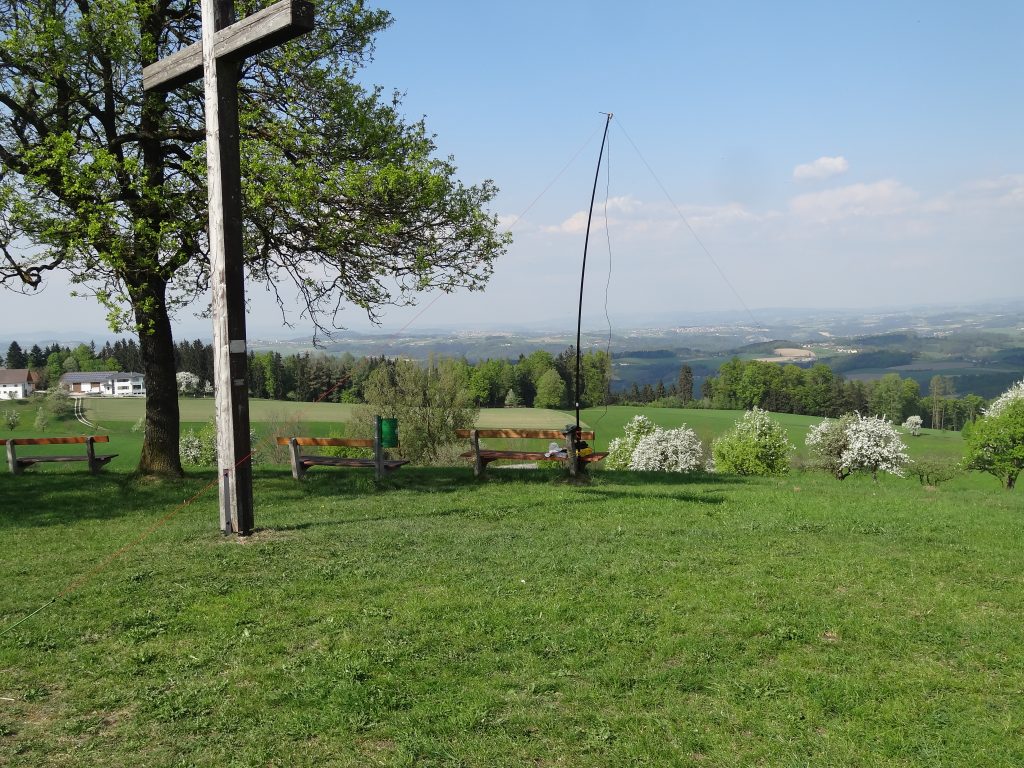
I built my multi-band inverted-vee trapped dipole based on CT1DBS’s description. SOTABEAMS antenna traps are used to turn off individual antenna segments (i.e., the 20 m signal only „sees“ a dipole with λ/2 ~ 10 m). These traps are resonant at 14,175 MHz, where they trap the 20 m signal, and 10.1 MHz, where they trap the 30 m signal. The entire length of the dipole is used for a 40 m signal.
A drawing of the overall configuration of my multi-band inverted-vee trapped dipole is shown below. The required length for each antenna segment is indicated in blue. The red numbers represent the ham radio band in use. A 1:1 BalUn at the dipole centre point allows feeding of the balanced dipole via an unbalanced coax feed line from the radio.
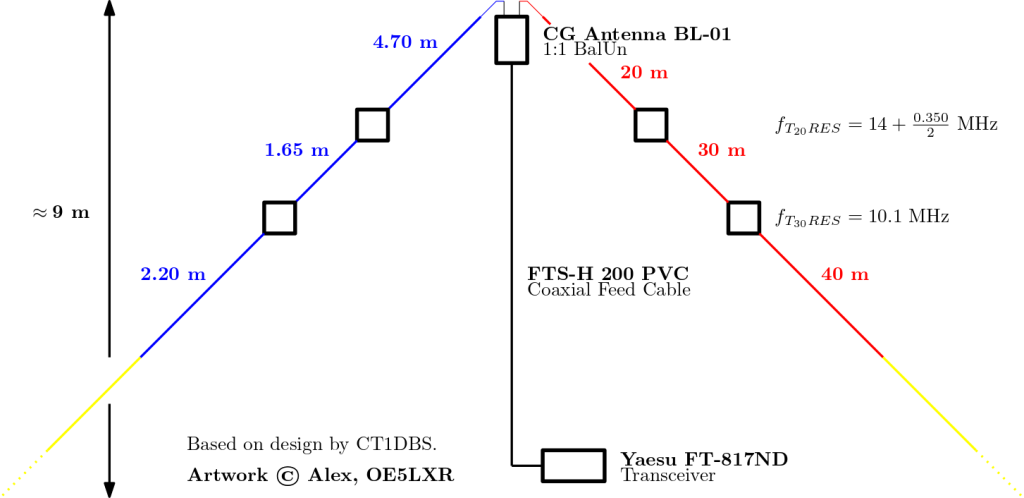
Each dipole half is made up of a cable cut to the length indicated in the drawing above. As shown in the diagram, I’m also using a red and a blue cable for the two dipole halves, which is only for aesthetics and has no bearing on how the antenna works. SOTABEAMS liquid electrical tape is used to insulate the antenna traps. I’ve added highly reflective non-conducting string to the antenna’s end for tying the dipole to the ground with stakes or to nearby trees. The reflective colour is intended to prevent accidental tripping on the summit by myself or other people.
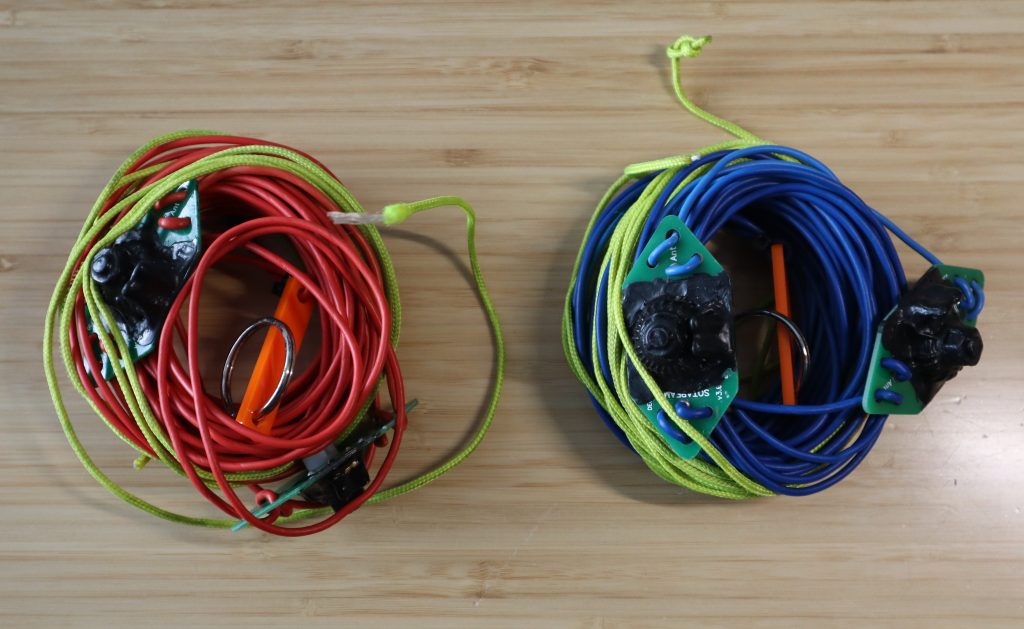
As previously stated, a 1:1 BalUn is used to adapt the balanced dipole to the unbalanced coax feed line. The CG Antenna BL-01 is designed for up to 100 W and is thus a little too large for QRP operations (no more than 5W out of my Yaesu FT-817ND). In the future, I might want to build my own 1:1 BalUn that is both smaller and lighter because it only needs to work for 5W plus a safety margin.
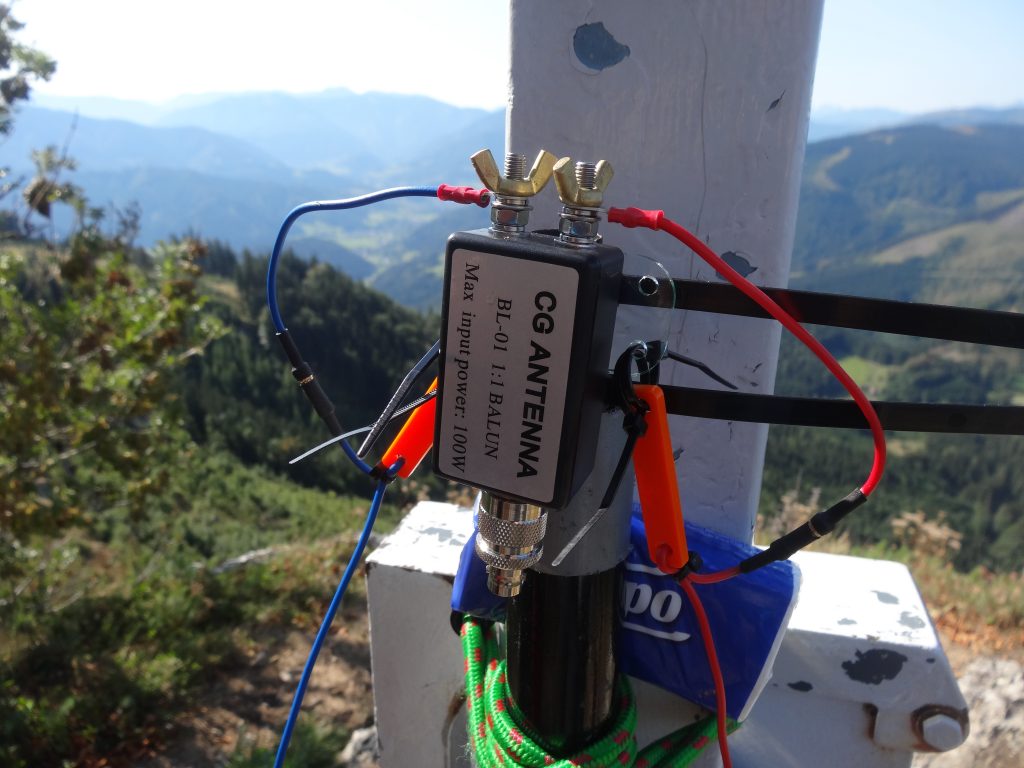
I’m using 10 m of RPSMA Male/Male FTS-H 200 PVC as a coax feed cable. This cable has a defined loss of 5,8 db/100 m at 30 MHz, which is slightly better than RG-58, which has a defined loss of around 7,9 db/100 m at 28 MHz. SMA connectors are used on both ends of the cable.
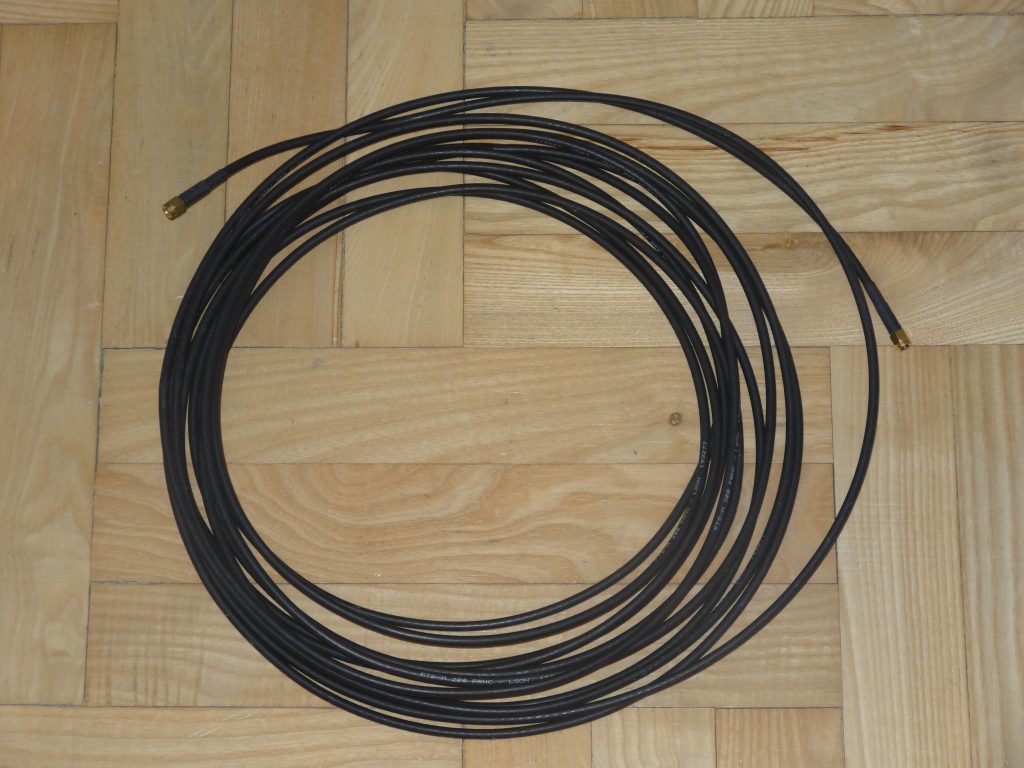
Because both the BalUn and the Yaesu FT-817ND have UHF connectors, two UHF to SMA adapters are required to connect the SMA connectors.
